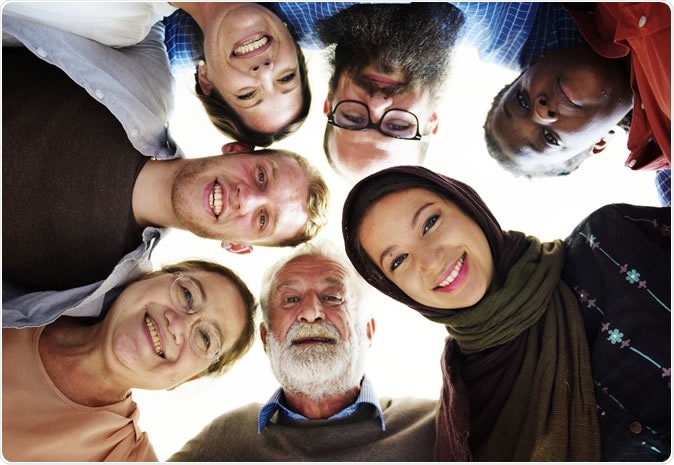It’s still a mystery why some people age faster than others, and some may look younger than their peers. Aging is inevitable but the molecular changes linked to it are not well understood.
Now, a team of researchers unveiled new information that the body ages at different rates and into different classes called ageotypes.
Published in the journal Nature Medicine, the study sheds light on the different ways people age and how they should get personalized care to extend healthy life.

Image Credit: Rawpixel.com / Shutterstock
The team wanted to take a deeper look at what’s happening on the molecular level, providing a possible explanation of why people age differently.
The findings of the study provide a basis for future developments of personal care, targeted medication, and lifestyle changes to improve one’s quality of life.
“We know already there are a handful of nice molecular and clinical markers, such as high cholesterol, that are more common in older populations. But we want to know more about aging than what can be learned from population averages. What happens to an individual as they age? No one has ever looked at the same person in detail over time,” Michael Snyder, Ph.D., professor, and chair of genetics, said.
Dr. Snyder and co-authors from Stanford University School of Medicine aimed to determine the molecular changes that happen with aging by performing a longitudinal and deep multi-omics profiling of healthy people.
They profiled a group of 43 healthy men and women between the ages of 34 and 68. They took measurements of their molecular biology for about five-time for over two years.
Biological pathways in the body
The researchers found that people age along specific biological pathways in the body – metabolic, hepatic (liver), immune, and nephrotic (kidney). For instance, those who are metabolic agers are at a higher risk of diseases like diabetes and show heightened levels of hemoglobin AC1, which measures the blood sugar levels in the blood, as they grow older.
Further, people who are immune agers may have higher levels of inflammatory markers, making them vulnerable to immune-related diseases as they grow old. However, the researchers emphasized that people may be both a metabolic ager and an immune ager.
The researchers also measured how the various types of “omic” measurements, such as metabolites, proteins, transcripts, microbes, lipids, cytokines, and clinical laboratory values, associate with age. They studied blood, stool, and other biological samples, and determined how these levels changed over time.
Aging in the molecular level
They said that the study provides a more extensive view of how people age, by studying may molecules and gathering many samples in the body. They were able to identify clear patterns of how aging affects each person at the molecular level, which can help formulate individualized care for everyone.
"The ageotype is more than a label; it can help individuals zero in on health-risk factors and find the areas in which they're most likely to encounter problems down the line. Most importantly, our study shows that it's possible to change the way you age for the better. We're starting to understand how that happens with behavior, but we'll need more participants and more measurements over time to fully flesh it out,” Snyder added.
People have an individual genotype and they also have an ageotype, which is a combination of molecular changes that are specific to one physiological system. The changes are gauged when the person is healthy and young, which can help doctors determine the most important thing to focus on to help extend a healthy life.
Journal reference:
Ahadi, S., Zhou, W., Rose, S.M., Sailani, M. R., Contrepois, K., Avina, M., Ashland, M., Brunet, A., Snyder, M. (2019). Personal aging markers and ageotypes revealed by deep longitudinal profiling. Nature Medicine. https://www.nature.com/articles/s41591-019-0719-5